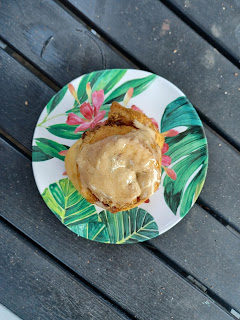From Milk Street
Ingredients
- 2 10-12-ounce bone-in, skin-on split chicken breasts
- 6 scallions, white parts coarsely chopped, green parts thinly sliced on a bias, reserved separately
- 1 1-inch piece fresh ginger, cut into 4 pieces and smashed
- 2 large garlic cloves, peeled and smashed
- Kosher salt
- 1/4 cup dry sherry (optional)
- 2 tablespoons chili oil
- 2 tablespoons tahini
- 1½ tablespoons white sugar
- 1½ tablespoons toasted sesame oil
- 1 tablespoon soy sauce
- 2 tablespoons unseasoned rice vinegar
- 1 teaspoon Sichuan peppercorns (optional), toasted and finely ground
- ⅛-¼ teaspoon cayenne pepper
- 1 large English cucumber, halved lengthwise, seeded and thinly sliced crosswise on a bias
DIRECTIONS
In a large saucepan, place the chicken skin side down, then add the scallion whites, ginger, garlic and ¾ teaspoons salt. Add 4 cups water and the sherry, if using, fully submerging the chicken. Bring to a boil over medium-high, then cover, reduce to low and cook at a bare simmer until the thickest part of the chicken registers 160°F, 20 to 25 minutes. Uncover the pan and let the chicken cool in the liquid for 15 minutes.
Meanwhile, in a small bowl, whisk together the chili oil, tahini, sugar, sesame oil, soy sauce, vinegar, ¾ teaspoons of salt, Sichuan peppercorns, if using, and cayenne.
Using tongs, remove the chicken from the cooking liquid. Remove and discard the skin and bones, then transfer the meat to a large bowl. Add 2 tablespoons of the tahini dressing, then use a wooden spoon to smash the meat, shredding it and working in the dressing. Use your fingers to pull the shreds into bite-size pieces.
Add the cucumber and ¾ each of the peanuts and scallion greens. Drizzle with the remaining dressing and toss until evenly coated. Transfer to a serving bowl and sprinkle with the remaining peanuts and scallions.
Tip: Don’t boil the chicken; keep the liquid at a bare simmer so the meat stays moist and tender.
My Notes: I used rotisserie chicken to make this super simple. It would be better to shred rather than cut into chunks . The dressing is so very good. MXF


